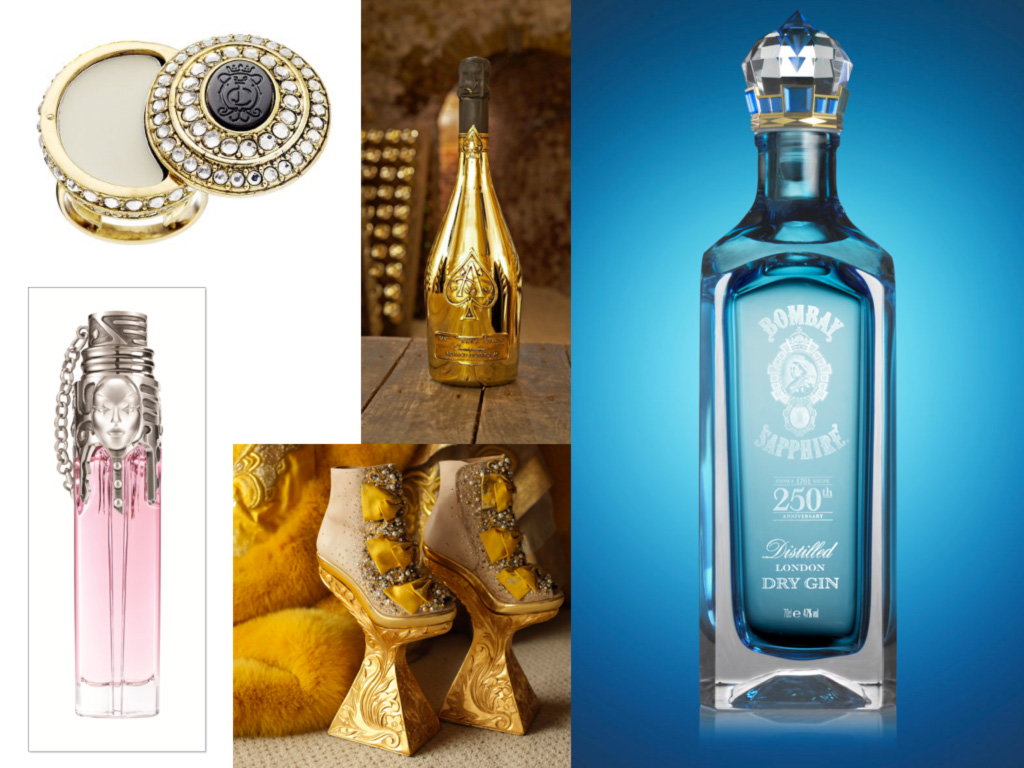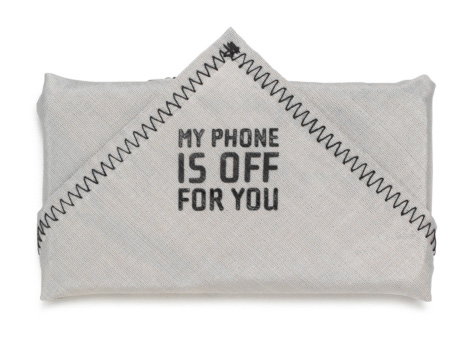With a new decade upon us, we thought this would be a great time to consider what socio-cultural shifts and resulting trends resonating today will gain strength moving forward. For CPG, HBA, any industry really, it is important to know what ideas will gain traction and what trends will fade away. Here, we have listed our favorite trends that we believe will continue to foster, from consumers to design.
Drama
Perhaps as an antithesis to the simple, quiet and modern design popular today, this macro-trend gets its juice from theatricality. Over the top, gilded, even baroque style, is finding its voice. Lady Gaga is the Master of Ceremonies but its aesthetic can also be found in new packaging design like Womanity by Thierry Mugler, the Juicy Couture encrusted perfume ring jewel or even the Bombay Sapphire 250th anniversary bottle. All these examples have a touch-me feel to them, an interesting way to break through the white noise on shelf.
There is a strong technological edge to this trend, found in the continued proliferation of 3D, which both drives and satisfies our fix for drama. Soon, 3D will be replaced by hologram technology, with no glasses required. Princess Leia repeating, "Obi won Kenobi, you're my only hope," will become a reality, with the line between virtual and real disappearing. Today, video games like Kinect use infrared technology to let your entire body drive the game. You shoot, you run, you dance, not just the controller. Today it is about creating experience and placing the consumer center stage.

In China, heavily theatrical couture is getting attention through the designs of Guo Pei, as illustrated in her modern take on the traditional Chinese platform shoe. By using theatricality, the object itself is elevated above its function. It is no longer just fashion or a video game but a newly created art-form, dying for interaction. This trend places status and extravagance in a historical context, making consumerism attractive again in a post-recessionary world.
By recycling several eras of fashion with modern mixes, people are satisfying their need to stand out as individuals and carve their own status. This deep need for identity in an increasingly complex world explains the dramatic end-point, the reason for the flair. Because consumers increasingly want to explore different sides of their personalities through experiences and products, we feel confident this trend will proliferate into the next decade.
Binary Generation
Defined as those born 2000+, their birth dates are written in code and their brains are learning how to interact with a world increasingly driven by technology. For example, today's tykes are as iPhone obsessed as their parents, if not more so. Maybe it is because of its intuitive nature or maybe it is because of the number of apps that cater to toddlers like Elmo's Monster Maker or My Blackboard, but expect this conversation to continue. Educational tool or passive entertainment? Discuss...
Dreamin'
The fantasy trend has come and gone but our cultural obsession with dreams continues. Today, one can join a 'dream group' where people meet to analyze their visions and find a new way to connect with others on a more personal level. Perhaps the movie Inception incapsulates this inner journey best, illustrating a surreal, quasi-dark edge. Dreams, after all, uncover our hopes and fears so they can be equally uplifting or scary. If ancient societies are to be believed, dreams contain vital messages. Sounds like the book club is getting an update.
XY
According to the Shriver Report, a 2009 study by the Center for American Progress, only 20% of families with children have working fathers and stay-at-home moms. Add to that, men accounted for 3/4 of all job losses during the recession, and we expect women to take on more leadership positions in business. After all, women own an estimated 10 million businesses in the US and the number is increasing. Even in emerging economies, like China, there are urban pockets of educated women enjoying status and power in their family and culture.
Boom Boom Boomers
The first wave of Baby Boomers turned 65 in 2010, redefining how to age youthfully. Select college campuses now include retirement communities for Boomers seeking intellectual pursuits, youthful activities and a way to retire with panache. "They're looking for a retirement - or semiretirement - lifestyle different from that experienced by their parents. They're looking for stimulating intellectual, social and volunteer opportunities," according to Gerard Badler, managing director of Campus Continuum, a company that develops and operates a network of university-affiliated communities for those 55+. This is a great opportunity for new and existing CPG brands to penetrate a new crossbreed - Millennials and Boomers - market.
Distrust
Our distrust of institutions: government, the Church, Wall Street etc. has only increased over the last year and we expect the same to hold true in 2011. An undercurrent of fear is still palatable, as the recession remains a reality for 27 million unemployed or underemployed Americans. Those with jobs, feel like they are going 25/8, in the pursuit of security and sanity. Perhaps Angry Birds, the best selling iPhone app of 2010, (according to Apple) best encapsulates our feelings of powerlessness in these queasy times. Get those green pigs!!
Creation
Some of the best ideas are born from recessionary times, so expect wonderful brands and ideas to launch in 2011. Disney started during the recession of 1923-24, Miracle Whip during the Great Depression, and the iPod launched just a month after the September 11th attacks. Today, Millennials have it especially tough so many are turning to entrepreneurial aspirations. These brands are mainly web-based and tend to center around a youthful space. For example, Intern Queen is a site that connects students with internships. Some Millennials believe that it is time to shift from an antiquated resume-driven construct to that of self-created jobs to drive the economy.
Pop vs. Box
The death of the middle class is upon us as America seems to be dividing into the 'haves' and the 'have nots.' This gap is illustrated by two distinct opposing directions in the retail world: unique vs. ubiquitous.
On one end of the spectrum, we have retailers creating experiences, compelling consumers to purchase with temporary pop-up shops and curated stores containing one-of-a-kind products. Consider the New York food world, where the cutting edge can be found on the many food trucks that populate our streets. Whether food or retail, by limiting the commodity momentum is built and a unique experience is delivered.
On the other end of the spectrum, retailers are increasing their bottom lines by penetrating emerging markets like Brazil, India, Russia and China. Basically that same $9.99 cardigan from H&M can be found on-shelf in Kennesaw, GA, or Maribor, Slovenia. To sell at an affordable price point, these items are mass produced and marketed globally. While this is helping increase market share in emerging markets, it is also providing affordable merchandise for the struggling parts of the US economy where groupon is hitting big.
Urban Roots
Admittedly, the Back to Nature trend has been around for a while. While consumers do want sustainable products, there is growing consumer fatigue on all things green. To avoid fading into the white noise, consider adding an urban edge to the localvore element of this trend to attract consumer interest in 2011. With daily inundation of technology, virtual relationships and processed foods, people crave real - real touch, real foods and real products. The closer it is, the more real and authentic it is perceived to be. All Things Brooklyn is having its moment in the sun, building off their reputation for starting gourmet canning and the art of urban farming, according to Chrysanthe Tenentes, managing editor of Brooklyn Based. By infusing an urban element, a grittiness is added to the natural visual language prevalent in this trend, changing the story and therefore, increasing consumer interest.

Niceties
With constant vitriol, rising prices and disappearing customer service, we are all short on time and, therefore, on common courtesy. Let's make it a trend to be kind to one another and, hopefully, others will catch up. Use these phonekerchiefs next time you have guests over. Made with silver fibers that effectively block incoming calls and texts, they are not just a conversation piece but a means to connect, something that will always be on-trend.

